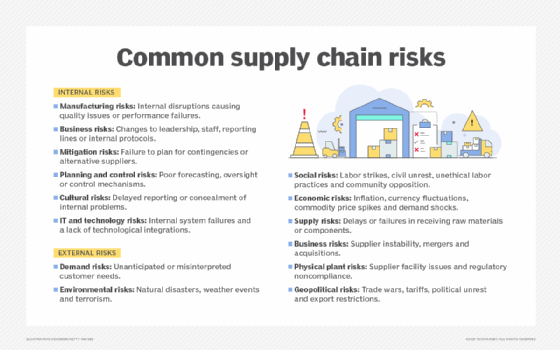
Funtap - stock.adobe.com
7 best practices for resource optimization
Effective resource optimization can help businesses navigate common challenges, like limited budgets and complex supply chains, to enhance employee efficiency and innovation.
Between limited budgets, constrained supply chains and dwindling material availability, businesses of all sizes must be smart about how they make the most of resources available to them.
However, significant challenges can hinder resource planning and optimization. These can include outdated tools, manual processes, a lack of visibility into resource availability and decentralized processes. When faced with these challenges, resource optimization techniques and best practices, like project management and tool consolidation, can help organizations overcome challenges, balance cost-cutting with innovation and resilience, and support effective project management at scale.
Explore these seven best practices for resource optimization.
1. Cloud optimization
Modern cloud deployments can be complex, especially in enterprise environments. An organization might have a mix of private and public clouds, on-premises servers and off-site cloud infrastructure, dozens of cloud-based applications supporting thousands of users, and more. Without proper oversight, this complexity can sprawl and lead to performance bottlenecks, ballooning operational costs and wasted resources.
Cloud optimization is the process of managing cloud environments to properly allocate resources, reduce complexity and improve performance. Organizations can select from various cloud optimization tools and techniques to effectively manage their cloud resources. For example, load balancing tools can help IT teams balance workloads and distribute resources efficiently across a cloud environment to improve app performance and minimize operational costs. Predictive analytics tools can forecast future usage trends and resource allocation.
At its core, cloud optimization aims to gain visibility into cloud resources, identify and analyze workloads, optimize resources and monitor usage to ensure needs are met while avoiding the overprovisioning or underutilization of resources. This can help keep cloud costs down, productivity up and resources balanced.
2. Workforce optimization
Workforce optimization (WFO) takes workforce management, or WFM, to the next level. Compared to WFM, which aims to improve employee performance and productivity, WFO is more comprehensive, often including every department and touching all operational aspects of the organization. WFO aims to maximize resources, fill skills gaps and ensure the customer experience is the best it can be.
Some of the core components of WFO include the following:
- Assess the current workforce's performance.
- Identify areas of improvement.
- Predict future needs within the workforce.
- Create strategies to fill gaps, elevate productivity and effectiveness, and reduce operational expenses.
WFO often involves several tools, such as scheduling software that automatically pairs employees with the right expertise and availability to specific tasks.
This strategy also offers a layer of QA to make sure staff members meet performance expectations and customer needs at scale. Time management tools can determine how long tasks take, evaluate employee performance and identify bottlenecks. Monitoring tools and analytics data can also assess WFO, as they offer insights into everything from overtime data to customer interactions and beyond.
When applied thoughtfully, WFO can help businesses gain deeper visibility into employee performance, customer satisfaction and operational expenditures, and find ways to address all three concepts to improve resource planning and make operations more cost-effective.
3. Project management
Project management is a formal process to plan and execute an objective. A project typically refers to the activities and tasks required to execute an objective, whether that's a tangible deliverable, like a book, or a service being performed for a client.
As mentioned, project management usually involves a formal process that's standardized either across projects or by project type. The process includes a project scope that does the following:
- Defines what work is included in the project.
- Provides a detailed timeline that establishes a schedule and maps out milestones, including a final due date.
- Lays out a task list that breaks down every activity needed to achieve the objective and who is responsible for each task.
The purpose of project management is to clearly organize work and simplify the process of overseeing a project from beginning to end. It can also simplify communication for the project, determine who needs to be involved and track its progress. It can also identify dependencies to help contributors understand when to start their work and who they hold up if they don't complete tasks on time.
A variety of software apps and tools can facilitate project management, including scheduling software, resource planning tools, monitoring and reporting technologies, and more.

4. Tool consolidation
Organizations can also consolidate their tools to improve resource optimization. In the modern SaaS landscape, there's a product, service and subscription for everything. As businesses grow, they acquire new tools to solve challenges or improve productivity, which can lead to tool sprawl without careful oversight.
Tool sprawl occurs when an organization has more services than it needs. Some telling signs of tool sprawl include the following:
- Low user adoption.
- Slower time to market.
- Unexpected downtime.
- Performance bottlenecks.
- Ballooning IT costs.
When a business has too many tools, users may not feel invested in learning them. This can affect the utility of the tool and result in a poor ROI if not enough users buy in. It may even hinder operational efficiency and innovation. IT teams may also have to spend more time on tool maintenance to ensure uptime.
To avoid these pitfalls, take the time to assess the organization's current tool landscape and evaluate each against specific criteria, such as adoption rate, usage metrics, vendor reliability and scalability. Ask questions like the following:
- Could the business continue running without the tool?
- Has the cost increased year-over-year?
- Does the tool still deliver value?
- Can the tool grow alongside the business?
In some cases, organizations adopt a single platform to consolidate multiple tools into one unified platform. This can reduce IT infrastructure complexity and improve user adoption and productivity, which is at the core of resource optimization.
5. Data-driven decision-making
Data-driven decision-making isn't just a buzzword. It's an important approach to business strategy, management and resource optimization.
Data-driven decision-making is the process of collecting and analyzing information related to business objectives and performance. This data and its insights can guide key decisions. For example, a business may gather historical product and market data and discover seasonal trends. With this insight, the company can begin resource planning and ramp up production ahead of seasonal peaks to capitalize on demand and drive a more efficient bottom line with smaller margins.
However, data-driven decision-making relies on good, quality data. Organizations must find ways to improve data consistency, reduce input errors, streamline data-based processes and workflows, enhance quality and improve availability to turn data-driven decision-making into an effective tool for resource optimization and project management.
6. Resource leveling and smoothing
Two common resource optimization techniques are resource leveling and resource smoothing. These techniques are often used in conjunction to complete projects on time and balance resources accordingly, but there are distinct differences between the two:
- Resource leveling is typically used when the main constraint on a project is resource availability. This technique can make sure no resource is overprovisioned or underutilized. However, this may come at the cost of increased timelines or delays.
- Resource smoothing is usually applied when the project's priority is the due date. This technique can make sure the project is delivered on time. However, this method can be less flexible and more rigid in comparison to resource leveling.
Another common resource optimization technique is reverse resource allocation, which can also be used with resource leveling and smoothing. Reverse resource allocation involves building a project timeline and task list backwards, depending on the desired due date or the availability of certain resources.
For example, the team might need a person with a particular expertise to complete the project, but that person is not available until a certain date. Reverse resource allocation can build a timeline based on that person's availability and determine an appropriate due date.
Combined, these techniques are all part of the resource planning toolkit. Project managers who understand these techniques and when to use them can effectively balance resources and adhere to timelines.
7. Critical path method
The critical path method is a project management technique designed to help identify critical and non-critical tasks within a project. It can simplify complex projects, as it defines all tasks upfront, lists them in a sequential order and creates a visual diagram that both maps out the relationships between tasks and highlights the path to completion.
Project management tools can help organize resource planning based on the critical path method. For example, these platforms can help identify the sequence of activities, assess risk along the critical path and visualize the plan at a glance.
The critical path method may not be appropriate for simpler projects. For large-scale projects that require many tasks and contributors, it can be highly effective and reduce complexity, ensuring projects get done as quickly and efficiently as possible, with minimal resources wasted.
With the right tools, techniques and best practices, businesses can better navigate resource planning challenges and embrace sustainable frameworks and processes to support effective project management and resource optimization for years to come.
Jacob Roundy is a freelance writer and editor with more than a decade of experience with specializing in a variety of technology topics, such as data centers, business intelligence, AI/ML, climate change and sustainability. His writing focuses on demystifying tech, tracking trends in the industry, and providing practical guidance to IT leaders and administrators.







